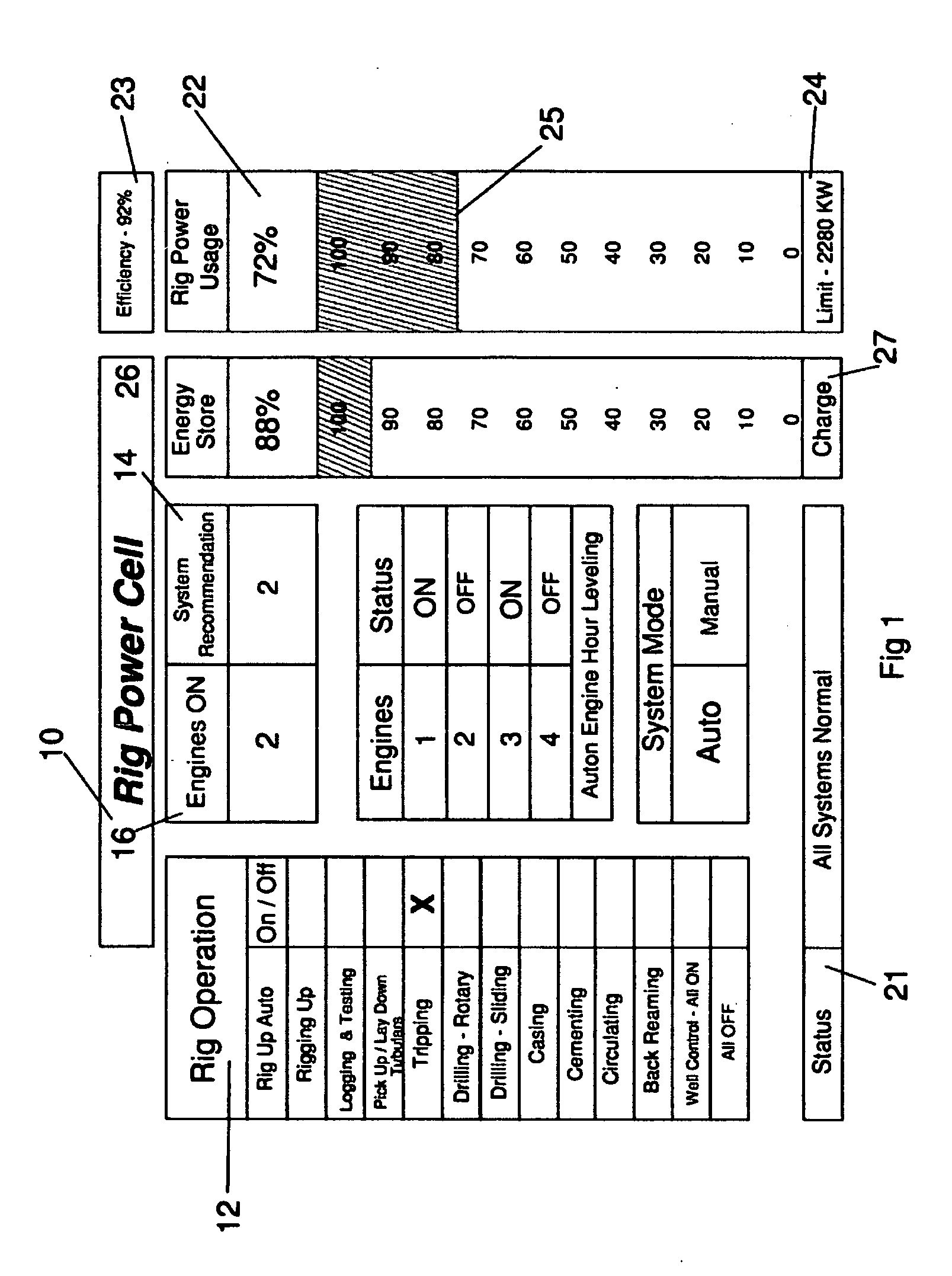Management system for drilling rig power supply and storage system
a management system and power supply technology, applied in non-electric variable control, process and machine control, instruments, etc., can solve the problems of increasing the overall rig fuel consumption rate, increasing the cost of operation, so as to reduce the number of operating gensets, increase the demand for generators, and improve the effect of efficiency
- Summary
- Abstract
- Description
- Claims
- Application Information
AI Technical Summary
Benefits of technology
Problems solved by technology
Method used
Image
Examples
Embodiment Construction
[0032]The subject invention comprises a method for managing an energy supply and storage system for a rig power supply of the type having a power generator coupled to rig loads, the power generator used for powering the rig and for charging the storage system, and the storage system adapted for selectively supplementing rig power, the method comprising the steps of: selecting a rig function operation; setting the system to recommended settings for the selected rig function operation; monitoring rig power usage for the selected rig function operation; distributing excess power to the storage system when the rig power usage falls below a preselected threshold; and distributing stored power from the storage system when the rig power usage is above a preselected threshold. In the preferred embodiment the recommended setting for the selected rig function may be modified depending upon power usage by setting preselected thresholds.
[0033]Typically, the rig includes a plurality of engines f...
PUM
 Login to View More
Login to View More Abstract
Description
Claims
Application Information
 Login to View More
Login to View More - R&D
- Intellectual Property
- Life Sciences
- Materials
- Tech Scout
- Unparalleled Data Quality
- Higher Quality Content
- 60% Fewer Hallucinations
Browse by: Latest US Patents, China's latest patents, Technical Efficacy Thesaurus, Application Domain, Technology Topic, Popular Technical Reports.
© 2025 PatSnap. All rights reserved.Legal|Privacy policy|Modern Slavery Act Transparency Statement|Sitemap|About US| Contact US: help@patsnap.com



